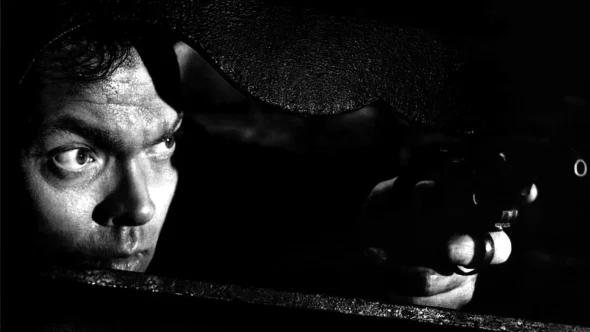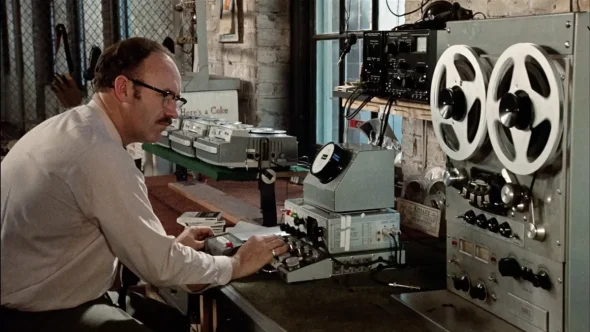
Marvel's streaming series have adopted a certain cinematic quality straight out of the movie theater: Like their big screen counterparts, the Disney+ shows are shot in a standard 2.39 aspect ratio; their casts comprise of bona fide movie stars; and no money is scrimped when it comes to production value and visual effects. The latest series set in the MCU, Secret Invasion, has been likened to "a six-hour movie unto itself" by director Ali Selim.
"This is one big story, and I hope you enjoy it as one big story," he explains. "It's not episodic. You are not going to feel satisfied at the end of any episode. You're going to feel like, 'I got to keep going to know what happens next!' If you want to have the impact of the story, you got to stick with it till the end."
In Secret Invasion, Nick Fury (Oscar nominee Samuel L. Jackson) must fend off an invasion by shapeshifting aliens, continuing a storyline that was first introduced in 2019's Captain Marvel. The series is not as interstellar as it sounds, but instead, a gritty spy show about secret agents unsure of who they can and can't trust. Oscar winner Olivia Colman joins the MCU as MI6 agent Sonya Falsworth, while Oscar nominee Don Cheadle reprises his role as James "Rhodey" Rhodes.
For Selim, who directed all six episodes, it is his largest production to date. An award-winning commercial director who has been working in film and television for more than two decades, the director turned to classic films — notably, classic film noirs and thrillers — for inspiration.
Below, Selim shares with A.frame five of the films that had the biggest influence on Secret Invasion.

Directed by: Carol Reed | Written by: Graham Greene
When I read the script from Kyle Bradstreet, I was immediately pulled into themes of mistrust, and paranoia, and suspicion. The character who pulls us into this story is a man — not a superhero. His boots are on the ground. He can't fly. He's older, he's wiser, he's maybe a little bit cynical. But he's also a little bit broken and has lost his step. He needs to address his personal life in order to accomplish the task that he's been given in this show, and part of that is addressing his internal life, and questions of fears, and doubts, and purpose. When you take all of that and wrap it together, I immediately go to film noir. I think we'll all agree that the greatest film noir of all time is The Third Man.
The first time I saw The Third Man was years ago in a film class with a professor who loved noir and walked us through it. My son lives in Vienna, and there is a theater on the main street in Vienna that shows The Third Man every day, seven days a week, at three o'clock in the afternoon. I've seen it there, where then you can step out and walk the streets, which is really a fascinating experience.

Written and Directed by: Francis Ford Coppola
The Conversation is very shrouded. To the best of our ability, we tried to do that, but you can only shroud stuff so much in the MCU before it becomes not the MCU at all. So, that was a fine line to walk.

Directed by: Alan J. Pakula | Written by: David Giler and Lorenzo Semple Jr.
The Conversation by Coppola then leads me to Alan Pakula's "Paranoia Trilogy": Klute, The Parallax View, and All the President's Men, which I still think is one of the greatest films of all time. This list, it's not a one, two, three. It's more of a whole which created a feeling, so that's why I lump them all together.

Directed by: William Friedkin | Written by: Ernest Tidyman
The French Connection, if you watch it again, you'll see that it is all shoe leather. There's very little setup. It's all just guys walking around. It's very frenetic, and it's always driving, or walking, or moving, or handheld. And we referenced that a lot.
You take all of those films and I think they really help create a sense of grayscale. In the MCU, it's often a very binary story of good and evil, and we know it from the beginning. And we watch them collide. In this story, we really wanted to create a sense of fogginess, a sense of the grayscale. I think if you take all of those films together, you do get that sense of nothing is as it seems.

Directed by: John Ford | Written by: Frank S. Nugent
A lot of these references ended up on the wall as still frames, so that we had a shorthand to refer back to for lighting, or composition, or obfuscation — the way you frame things and light things so that you don't see what you want to see. The cinematographer watched them all, and the production designer watched them all, so we had visual references. I think all of that informs how we approach the actors. But the actors, they just need to know anything could be anything, anyone could be anyone, and we are working in a world of grayscales, not binary black and white.







